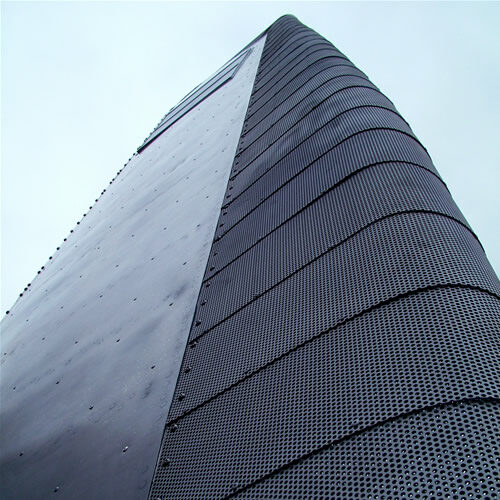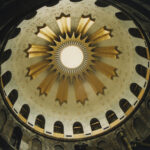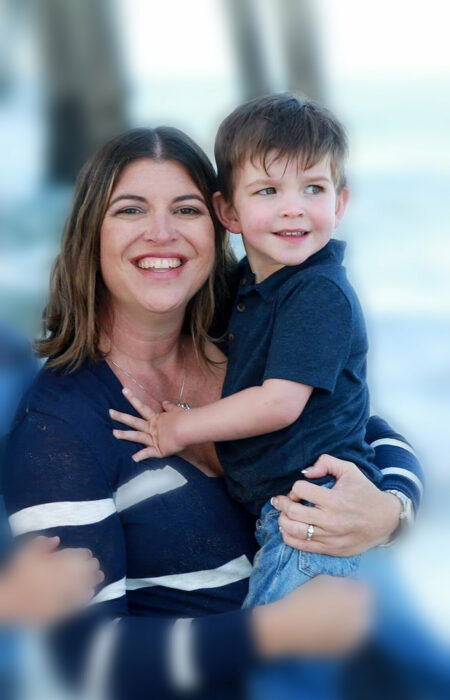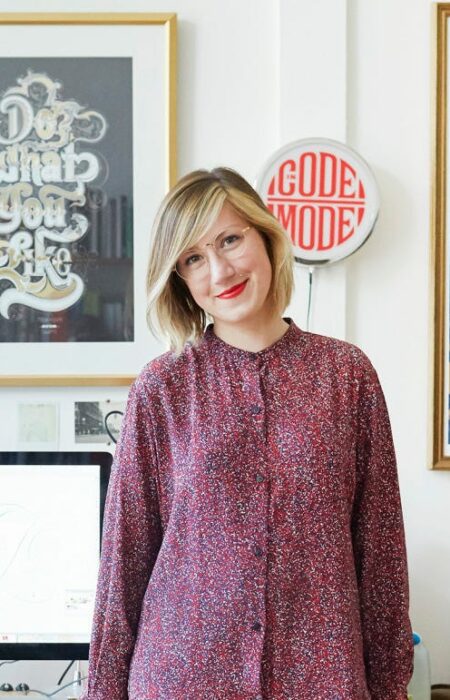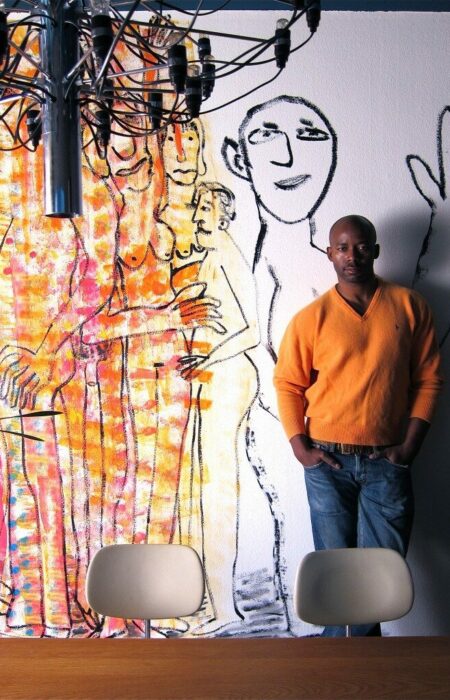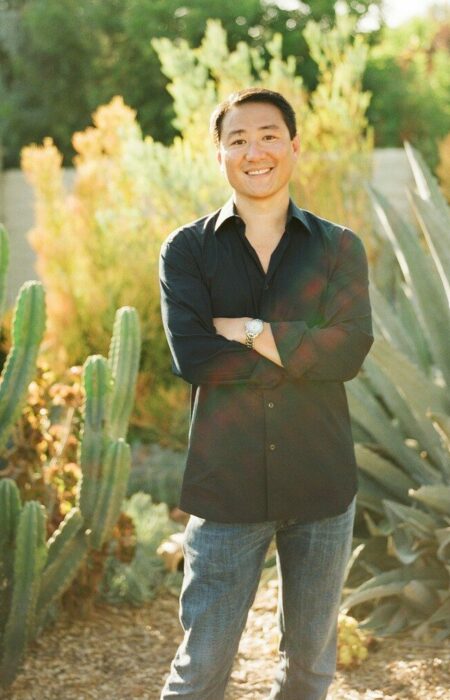You work in so many different media, including metal, string, wood and stone. Do you refer to your work as sculpture?
I do refer to what I do as sculpture. I think my work includes many other definitions as well, but my core ambition to each piece comes from a desire to sculpturally represent my responses to particular relationships in the environment.
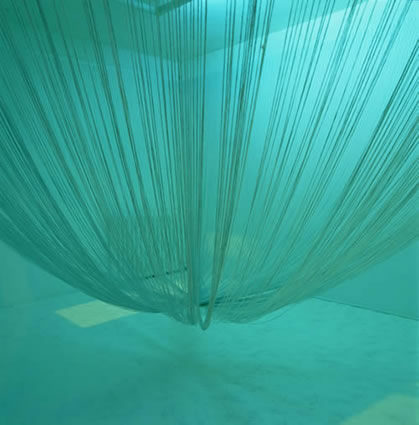
String sculpture called Evening Lull, by Patrick Marold.
Even though you’re quite young, you’ve done a lot of commissioned pieces already. Before you started having that success, how did you go about developing a portfolio of work?
Early on and as I do now, I simply created my art for the sake of making it and communicating whatever it was I wanted to explore in that piece. There was a desire to develop a portfolio, but it is also a soulful motivation that wakes me up or causes me to observe this world and dig into things that inspire me. I was intentional early on about developing a routine that included creating work at all times, and setting aside time in each day to nurture this practice. Ninety percent of what I did (and still do) is unsuccessful, but it is vital I keep a momentum going. I also became very resourceful — using free materials, and taking advantage of the opportunities I was presented, and constantly documenting my work. People often comment that I have been very productive, but I am usually battling with my desire to realize more ideas than actually do.
What’s striking about your work is your sheer versatility — in scale, in materials, in style. What factors drive your creative process, and how are you determining what to make and how to do it?
I try to maintain a balance between my own input, and what the material and site tell me. I want my work to reveal a dialog, and to allow the material and location to speak clearly. In some ways, I resist settling into one approach and one style. I feel like I need to remain open to each and every work becoming its own, and letting go of my control. This does not make me terribly efficient, or my art very lucrative, but it allows me to be nourished and remain excited in what I am doing. My versatility is derivative of where and what I work with.
Tower, wood sculpture by Patrick Marold.
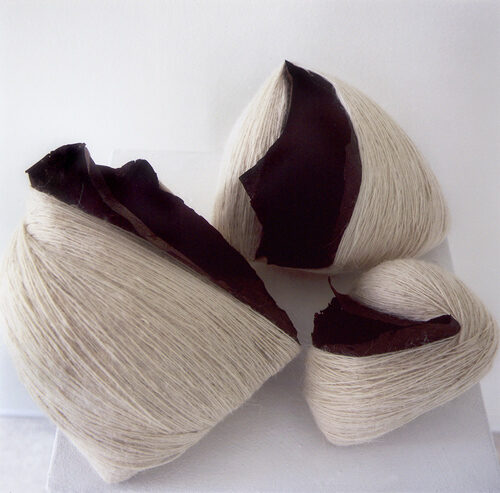
Woolen Bundles, by Patrick Marold.
Certainly the key thing that stands out about your work are the beauty of the forms and their organic nature, no matter what material you’re working with. Do you have a vision for these forms at the outset, or does it come about as you manipulate these materials?
I sometimes start with a defined vision, but I often arrive at something else. There are common threads in my sculpture, but I am often surprised at what I actually end up with. Most of these forms are greatly determined by the material, and the time taken to make them. Because so many of my materials are in a sense living, they change physically as I work, so I try to get in touch with this rhythm. Patience and restraint are often as important as anything else.
One of my favorite installations you’ve done is the windmill project, first in Iceland and then in Vail, Colorado. Can you tell me more about how you came up with this idea? And do you see a future in which art will be integrated into renewable energy sources or other mechanisms?
The Windmill Project is a unique work in comparison to most everything else I do. This idea was born loosely before arriving in Iceland — but once I settled in the rural area where I lived, I was surrounded by wind, open pasture land and long dark evenings. I allowed myself to think of the lack of light and abundance of wind as means to work with, and I still try to maintain the focus of the project on the wind and light values, rather than the actual windmills. My desire was to watch the wind, and create a system that could most efficiently translate this idea. Though I had an interest in renewable energy, it was not my original intention to align this sculpture with the industrial trends. Yet now I openly welcome this dialog and am very pleased with this association. I think it is inevitable that more and more works of art will be related to renewable energy. I just hope that it doesn’t develop into a style or stereotype, leading to lower quality works of art that are more about the marketability of this association. This is a topic that tends to repeat itself in any popular style or movement, and there is always a good and a bad side to it. Nonetheless, with the attention of the world turning more and more towards resources, artists will and should respond to these issues. A great exhibit and book that exhibits some of this work is “Weather Report” curated by Lucy Lippard.
Windmills installation, by Patrick Marold.
Patrick carrying windmills to the installation site.
Do you prefer doing public or private commissions, and why?
I welcome any commissions. I tend to get chosen for more public commissions than private because of the way it works out for me as primarily an independent artist. I do not have serious representation that aggressively seeks private commissions for me yet, and I am exposed to more public art opportunities than private. I sometimes approach private collectors or foundations, but often find it easier to work with people that already have a site and budget in mind. I think the bureaucracy of public works can be frustrating, but so far they have been good experiences, and I feel that I have taken the responsibility of public money very seriously. The commissions do occupy more of the “business of art” for me, and they provide an income that indirectly supports my other works and explorations.

Illuminated Grove, by Patrick Marold.
What were some of the turning points early in your life that lead you to consider and pursue art?
There are so many, and no one point turned me so much as the encouragement that I received from people around me. There were moments like squeezing the water out of a lump of moist earth, or holding my breath underwater and staring at the sky from the bottom of a pool. I do attribute a great deal to walks I’ve taken. Walks have a tendency to reveal direction in my art.
Where do you see your work going?
I hope to work more with the sky. I already use the sky and our relationship to it in some works, but I have so much more to explore this way.
What are some of your favorite things, whether they inspire your work or just make you happy?
Favorite things go day to day for me. I love eating Pho, a nourishing, affordable, and social meal (Vietnamese soup). One of my favorite albums of 2008 is Forfeit or Fortune by Crooked Fingers. Eric Bachman and his songwriting inspires me to create better art. Some of my favorite living artists remain consistent like Goldsworthy, Turrell, Maya Lin, but I also find myself drawn into others depending on the season and year like Ann Hamilton. She had a fantastic exhibit at a local gallery that renewed some of my excitement about contemporary art and installations. As for books, I have many favorites, but I do tend to pick a And Our Faces, My Heart, Brief As Photos by John Berger on a regular basis to read a page or chapter. I love to recommend Independent People by Halldor Laxness. The desert is a favorite place for me, and there are corners or streets in cities that I wish I could combine into one… too many to mention. Afternoon naps are a favorite for me, mostly because of the quality of dreams that I experience. And early summer mornings, just before the light returns, in a unfamiliar place — those are usually favorite moments.

